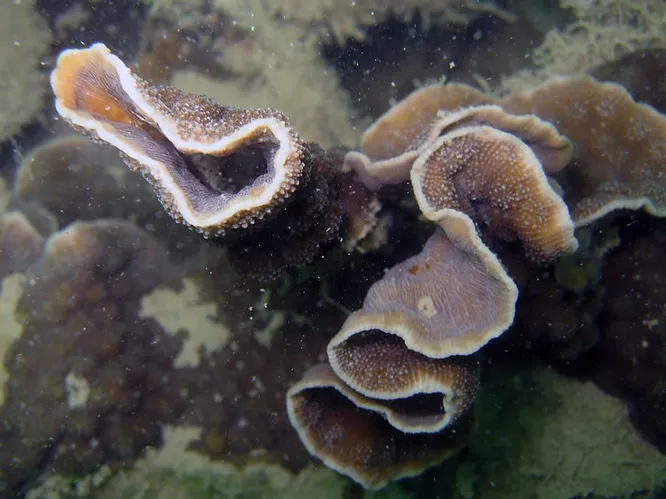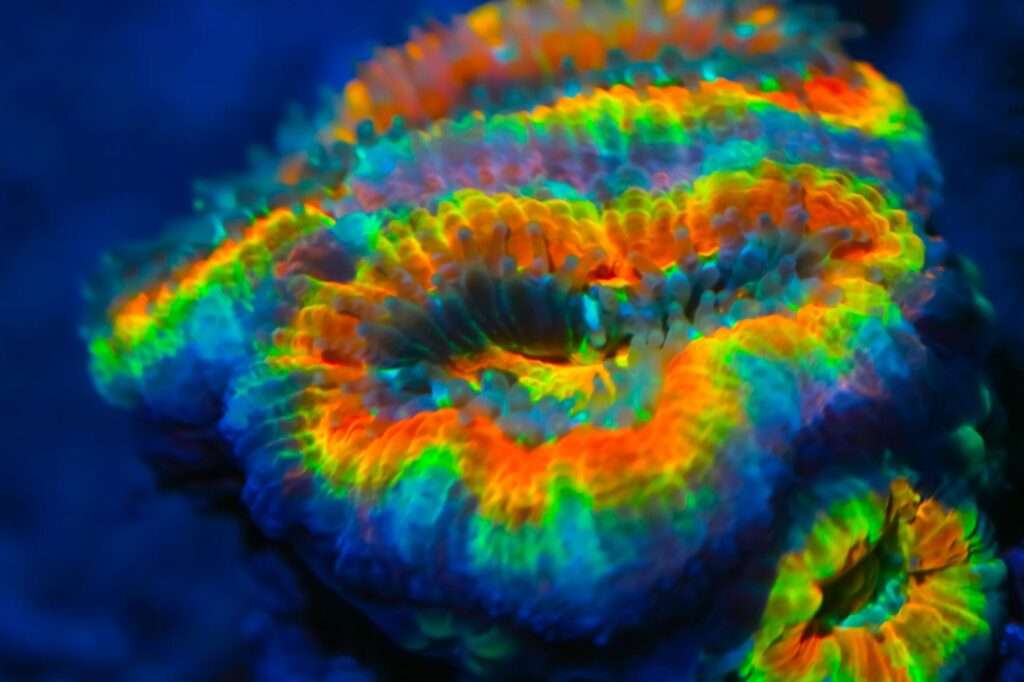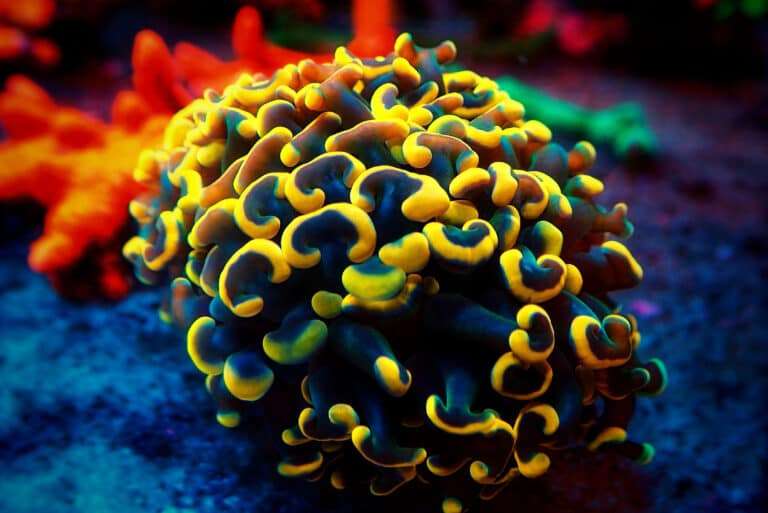
Clown Goby species from the genus Gobiodon are frequently observed bopping around the surface of the Echinopora genus. They coexist peacefully with Acroporas and Hedgehog Corals, much like a clownfish and an anemone. If you give them lots of room to establish their own territories, these content Clown Gobies might even spawn in the reef tank.
The Merulina genus may come close to matching the diversity of growth types found in hedgehog corals. Massive colonies of these organisms in the wild can take the form of arborescent branches that resemble long trees, foliaceous sheets that resemble thin leaves, or a combination of both. For instance, encrusting plates may form branches, which may then form higher-up plates.
Habitat
Lamarck first outlined the Echinopora genus in 1816. The Echinopora genus has been propagated in captivity, and propagators have given certain specimens unusual names like: Blue Alien Eye, Firefly Echinopora, and Vibrant Hybrid Watermelon Chalice
The Echinopora genus inhabits shallow-water settings with flat surfaces, including lagoons and back reef margins. It is also found on coral crests, rims, and slopes. They can be found in clear, murky waters between 10 and 114 feet (3 and 35 meters), however the majority are found closer to the surface (35 m).
Morphology
Even within the same region of the reef, the growth patterns of the Echinopora genus vary greatly. Each species is huge and encrusting, and they can all grow plates, branches, or both in the same colony. Within the colony, each corallite, or raised area where polyps live, has its own wall and calices, which can measure up to 5 mm in diameter. There are septa within the corallite. On the inside of the corallite, the bone or teeth are referred to as septa. The septa have an uneven shape and protrude, giving them a slightly rougher appearance. Coenosteum is the name for the surface tissue that lies between and connects the corallites. Except for E. mammiformis, all species of coenosteum have a rough, slightly grainy surface; this species’ coenosteum is smooth. The tentacles of the polyps emerge at night to feed, just like those of other Faviidae members. The skeletal structure must be examined in order to distinguish between the various species, as depicted.
In Captivity

- Feeding
The Echinopora genus has evolved a variety of feeding techniques. They get some of their nutrients from a marine alga called zooxanthellae through a symbiotic interaction. They can also take in dissolved organic substances and planktonic creatures as well as food particles from the water column. Feed foods for filter feeders as well as rotifers, freshly hatched brine shrimp, mysis, and zooplankton-type diets. They do require feeding at least once a week, and regular feedings help them grow very well.
- Social Interactions and Compatibility
With other genera, the Echinopora genus gets along well. However, because to their peaceful character, these corals will need space from other corals. They do have tentacles that emerge at night, but they are useless in winning battles. Pick your tank buddies wisely. They frequently die when kept in a tank containing plenty of small polyp stony (SPS) corals, especially soft corals. Even though they are far away from these corals, they are still incredibly sensitive to the chemicals that they release. If the aquarium is overstocked with acroporas, they may also harm the echinopora.
Table





